The Environmental Radioactivity group (URA) analyses vegetation samples taken in the vicinity of nuclear power plants and in several regions of Switzerland outside their range of influence twice a year. The primary objective is to determine whether radionuclides of artificial origin have been deposited on the ground. In combination with soil analysis, these measurements can also be used to establish soil-grass transfer factors.
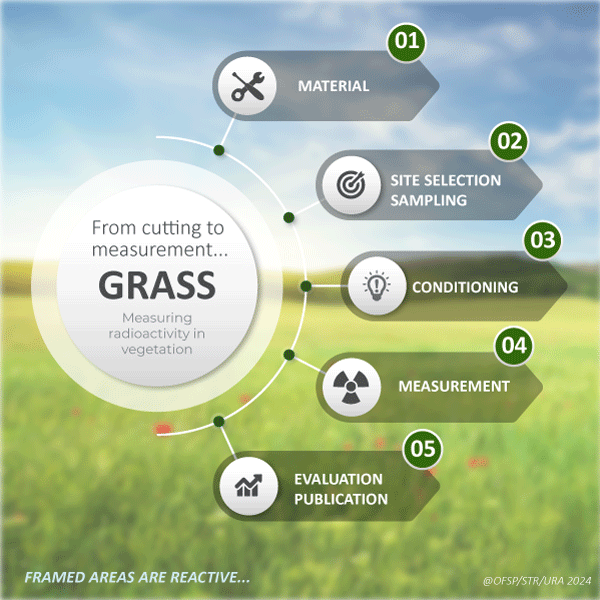
1. Equipment
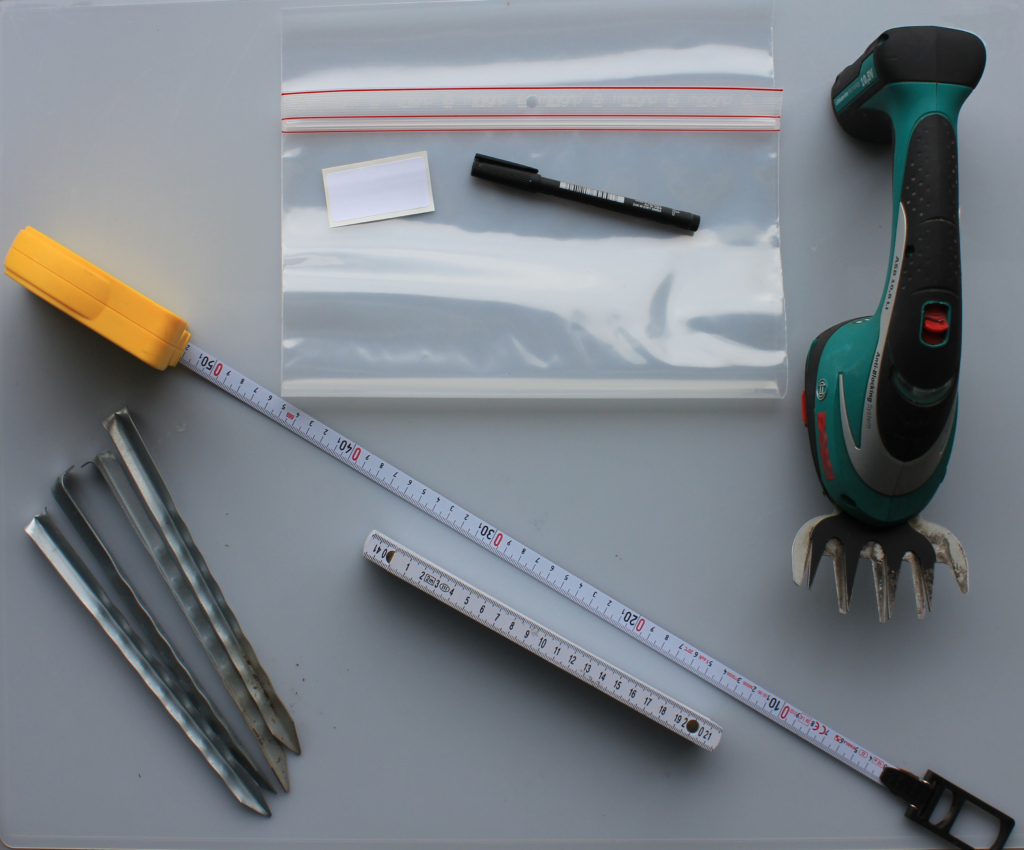 Grass sampling can be carried out in a number of ways, depending on the purpose of the measurement. Whatever the method, here's the equipment needed to carry out grass sampling:
Grass sampling can be carried out in a number of ways, depending on the purpose of the measurement. Whatever the method, here's the equipment needed to carry out grass sampling:
Required Equipment:
- A pair of secateurs or or electric pruning shears
- Measuring tape
- Four small tent nails, stakes
- Labels
- Plastic bag for sample collection
2. Choice of location
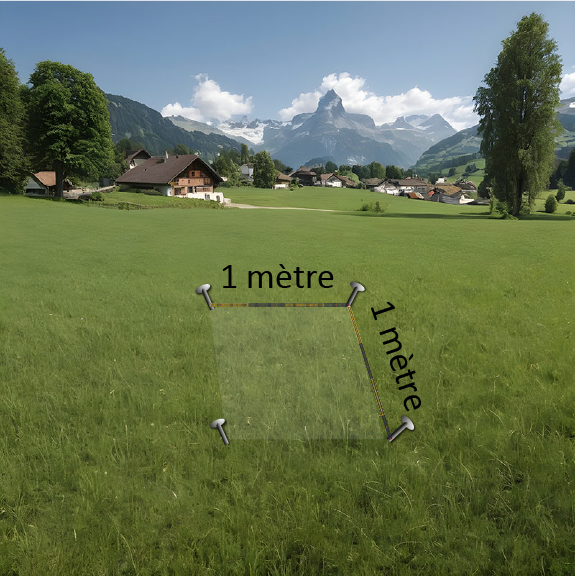
- Select a site that is representative of the area to be studied. If possible, the height of the vegetation should be around 10 to 20 centimetres. Carefully clear the area of any debris or foreign objects. Make sure the area is as uniform as possible.
- Mark out the area: Use two measuring tapes to mark out a 1-metre square. Mark the corners with stakes. It's important to know the sampling area so that you can determine the surface contamination in Becquerels per m2.
- Grass sampling: Within the defined area, use the electric pruning shears to cut the grass as close to the ground as possible. Try to obtain a quantity of grass between 1 and 1.5 kilograms. If the quantity is too small, extend the cutting area. Place the chopped grass in a plastic bag.
- Labelling: Label the sample with relevant information, such as date, time, location (geographical coordinates), cutting area, vegetation height, weather, etc.
3. Conditioning
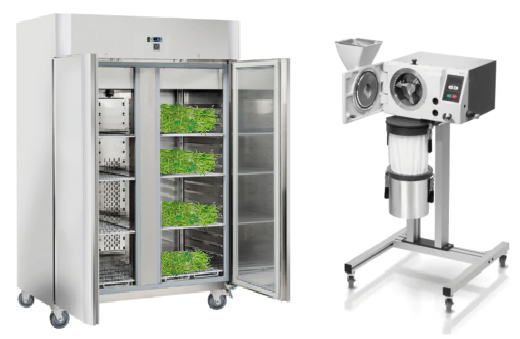 Preparation :
Preparation :
- In the laboratory, the weight of the vegetation samples taken is determined.
- The samples are then dried in a hot-air oven with a maximum temperature of 50 degrees. This temperature threshold prevents volatile isotopes such as iodine-131 from evaporating.
- Dry weight is determined.
- The dry sample is grinded into a fine powder using a knife mill.
4. Measurement

The grinded grass sample (1) is fitted into the measurement geometry (2). Gamma spectrometry (3) is used to measure radioactive elements such as cesium-137, iodine-131 or potassium-40 (natural) (4).
Measurement of strontium-90 requires different techniques.
5. Evaluation & Publication
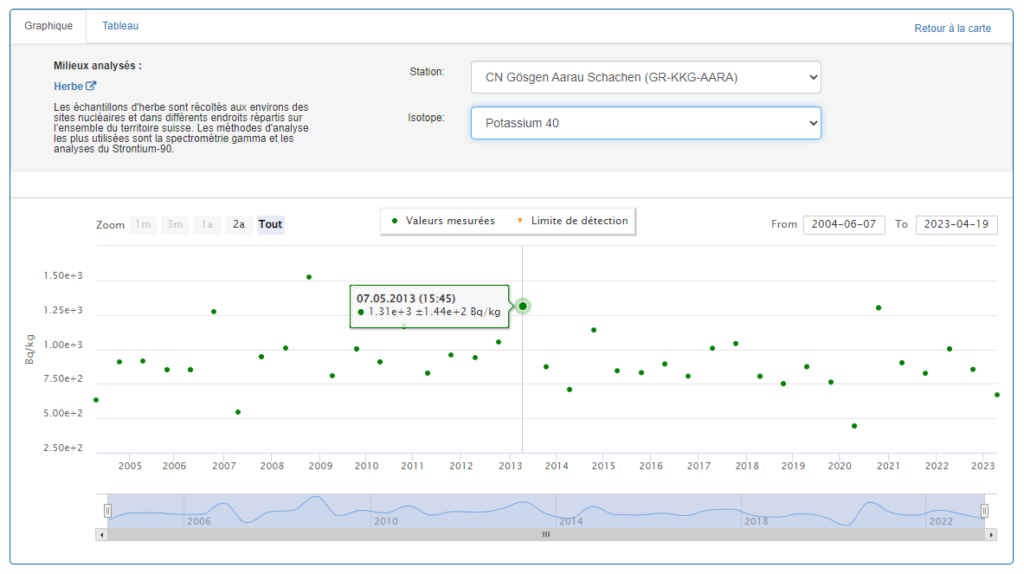
The measured spectrum is evaluated in order to determine the activity of each radionuclide detected. Results are given either in Becquerels per m2 or in Becquerels per kilogram of dry mass (Bq/kg) and entered into the laboratory database (LIMS). They are then published on radenviro.ch.
Data from measurements in vegetation and further information can be found on this page.
Comments
Radenviro is open to a respectful online dialogue and welcomes comments and questions. We encourage you to respect our netiquette.
Please note that there is no right to post a comment and we do not maintain any correspondence regarding the decision to post or not post a comment or question. Thank you for your understanding.




